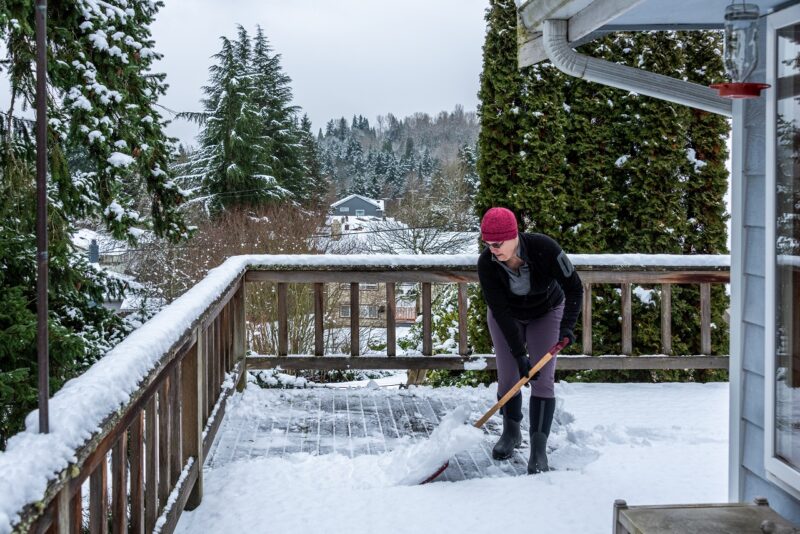Published: 17/12/24 By: Mike Bekin
As the weather gets colder and the nights grow longer, there is one thing on our minds at EcoChoice; how to prepare our timber for the winter weather. Notoriously harsh, the colder months bring a number of weather-related challenges, including rain, ice and snow. But does this mean your timber needs treating before winter arrives?
Find out everything you need to know in this guide.
How Timber Responds to Cold Weather
There are a few weather changes we see as the weather gets colder. Aside from temperature fluctuations, the main features to be aware of include:
- Increased humidity and rain
- Ice and hail
- Snow
For instance, the excess water produced by each can lead to swelling, warping and rot. Water which turns to ice can also expand small holes and cracks, creating larger areas of damage which need to be addressed.
All these weather conditions can cause issues for less durable timber species. Older, worn wood might also run into trouble, making it important you take the time to treat and maintain your exterior timber.
Does Timber Need Treating Before Winter?
Autumn and winter weather can negatively affect some timber, but not all.
If you have invested in a very durable timber, for example, then it is unlikely to be affected by the higher levels of humidity and water. A Durability Class 1 timber or Use Class 5 – such as Ekki, Greenheart or Iroko – can be used for marine applications and remain in constant contact with water, so excess rain will not be a problem.
(Not sure what durability or use class your timber is? Take a peek at our Durability vs Use Class guide to learn more).
However, if your timber is more than a few years old, we would consider treating the wood. This will help replenish lost oils and give it a little boost before harsher weather conditions.
Less durable timber will need extra TLC to stay strong and stable during bad weather. A species such as Pine or Spruce, for example, will not withstand rain and snow as easily as Opepe or Yellow Balau, making treatment essential.
How to Treat Timber Before Cold Weather
Treating less durable or older timber earlier in the year is a great idea. The dry, warmer weather will make it simpler to treat and ensure your wood is properly protected by the time cold, wet weather arrives.
If you have missed the summer window for treatments, though, do not panic! You can still protect your timber after the autumn or winter weather has arrived.
One of the main focuses of your treatment should be waterproofing your wood. You can find waterproof timber protectors in clear coats,for example the Osmo Wood Protector (which is also biocide-free), as well as timber oils which replace your wood’s natural oils and create a waterproof surface. Auro has a great range of natural, eco-friendly oils and waxes.
You can also use stains to protect your timber and freshen up its colour, helping your outdoor timber products look their best year after year.
Before applying any treatments, make sure that you have sanded off the top surface of any previous treatments to allow the product to soak into the timber.
Source High-Quality Timber
Don’t have time to oil, stain and protect your timber every year? Make maintenance easier by choosing a durable species which is well-suited to your project requirements.
If you are not sure how to pick a suitable timber, get in touch with our team today. We offer free consultations to match your needs to a high-quality, sustainably sourced timber species from EcoChoice.
Tags: Garden timber, timber treatments, winter
Categories: Insights
